Understanding the Ingredients of Soil

Understanding the Ingredients of Soil
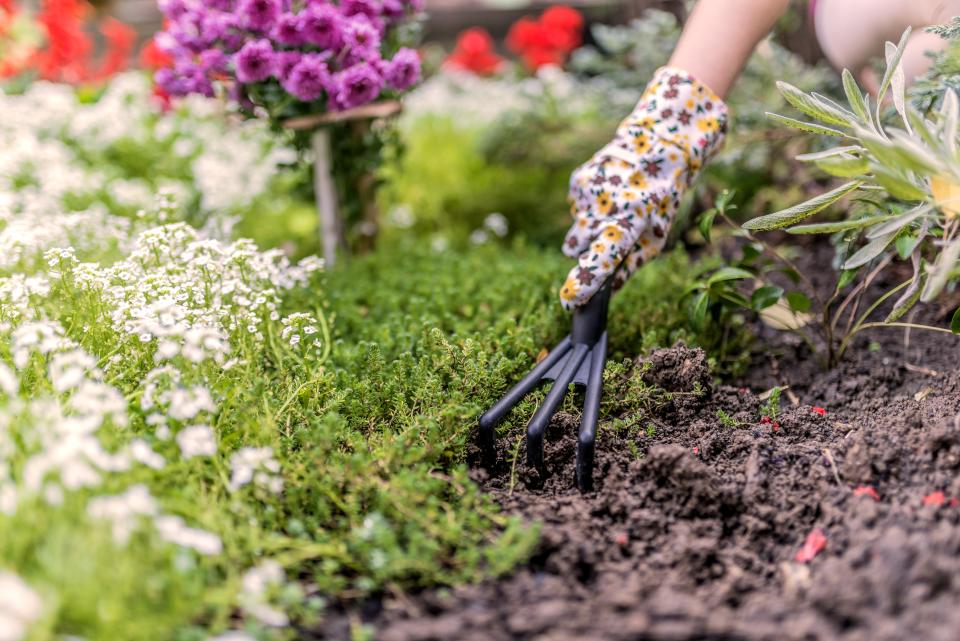
Understanding the Ingredients of Soil
As the upper layer of earth where plants grow, soil is an important part of the gardening process. Whether you're looking to fill your indoor flowerpots or trying to boost the growing power of your vegetable garden, you'll need a crash course on the complex (and not-so-complex) ingredients that make up soil. For the most part, all soil consists of varying amounts of oxygen, water, minerals, and organic matter. But it's the specific combination of these ingredients that can make-or-break its capacity to help your plants thrive.
There are three basic aspects of soil: sand, silt, and clay. While each is a simple substance, it's the inclusion of other ingredients—and the way these three are mixed together—that determine the types of plants that can take root within them. First up is sand. It's made up of tiny rock particles, is coarse, and drains easily. Silt, like sand, is made of tiny particles of rock, but the rock that makes up the base of silt is much finer and holds water a little better, making it ideal for retaining moisture. Finally, clay consists of the tiniest rock particles of all of the soil types, does not drain well, and can leave plants with little to no oxygen or drainage—which is why it works best when paired with drainage-helping agents like charcoal.
Individually, these three components are not good for growing, but when combined with a number of nutrient-enriched ingredients, your plants will thrive. To understand which type of soil combination your plants need (and how to achieve it) check out our list of soil recipes, additives, and terminology to ensure your plants get exactly what they need.
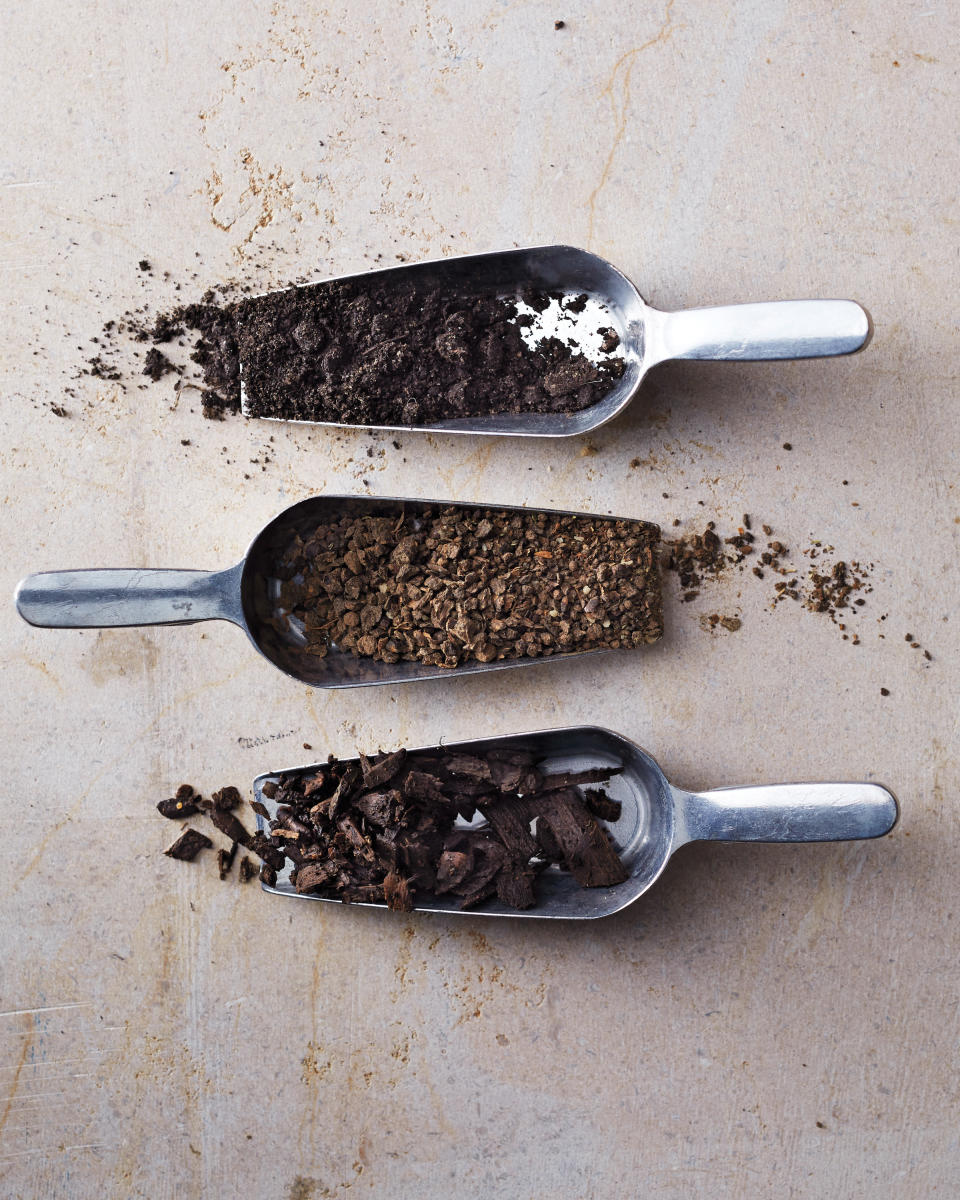
Creating Fertile Soil
It's important to create a hospitable environment for your plants to grow and prosper. This is where fertility agents come in handy. Sold in granular form, organic fertilizer (pictured in the middle) enriches the soil with a balanced blend of NPK, providing micro-organisms with a nutrient boost. The "be-all-end-all" for soil health, compost (pictured top) not only increases fertility but also improves soil structure so the mix holds water effectively. Composted bark (pictured bottom) is made of pine or hemlock, and it increases soil's fertility as it decomposes.
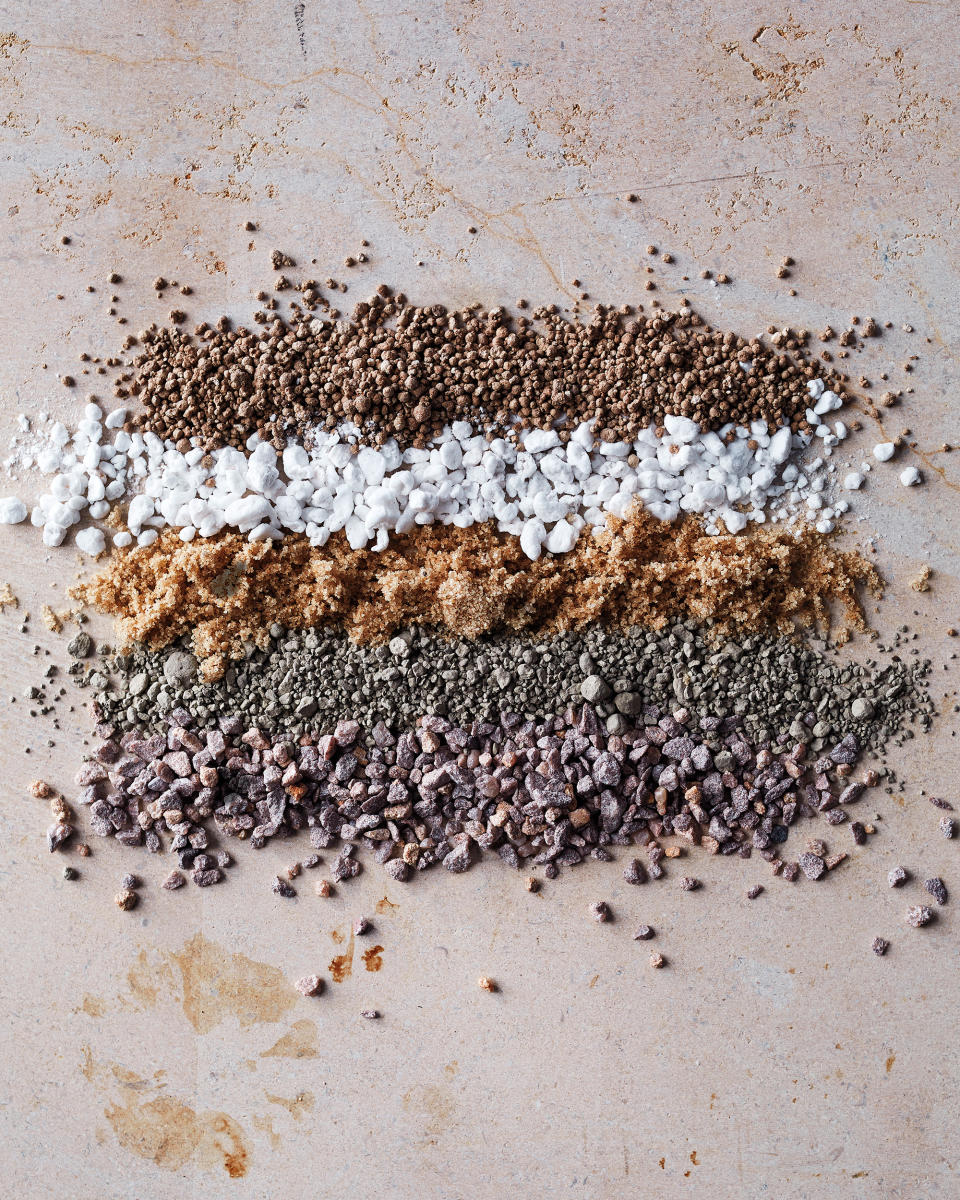
Drainage Agents
Most plants prefer good drainage. The below add-ins (pictured from top) create air pockets that collect—and release—water.
The top is garden gypsum, and is also known as calcium sulfate and helps clay soil aggregate into larger particles. It has a neutral pH but does affect soil chemistry, so use it sparingly. Below that is perlite, which is a fired igneous rock that looks and feels like tiny bits of styrofoam—it's lightweight and affordable. Next is coarse sand, and its coarse texture is the key here. Look for horticultural-grade or river sand. Don't use masonry or fine sand, which will turn your soil into cement! Sold as inexpensive kitty litter, calcined clay is fragrance-free, non-clumping, and works best in heavy soil. Finally, pictured last, poultry grit is an insoluble crushed rock that's available at local feed stores. Its small size and durability make it suitable for all container sizes.
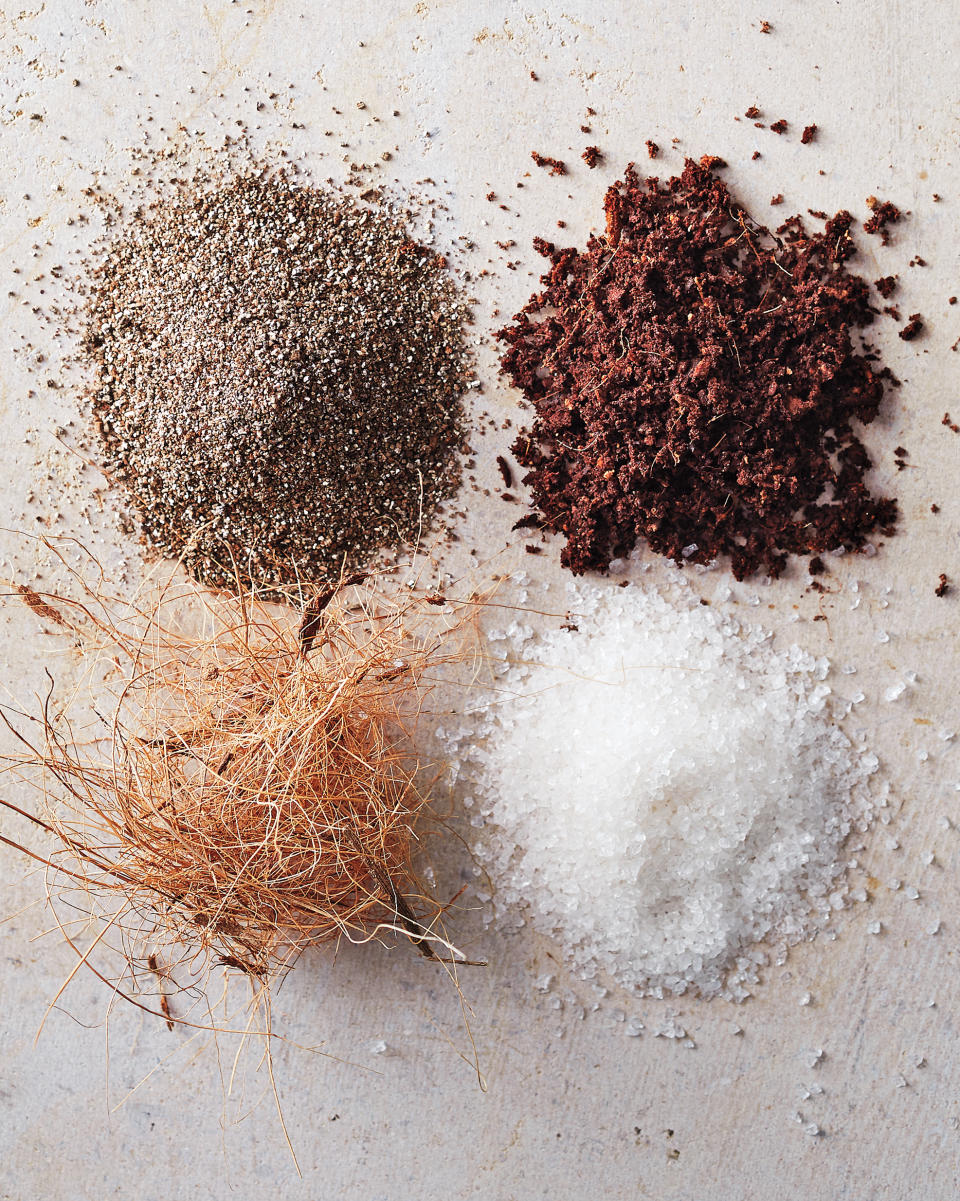
Water Retention
Containers dry out fast in warm weather—include one of these to keep the soil hydrated but still light and fluffy.
From the top left: Vermiculite is best for sandy blends. This heat-expanded silicate mineral contains spaces that hold water. To the right is ground coir, which is a sustainable substitute for endangered peat moss. It's made from coconut fiber. This type, sold as compacted bricks that break apart, is best for general potting soil. Pictured below, shredded Coir provides extra water retention—excellent for tropical and other plants that prefer moist, wet conditions. To the left, soil moist features super-absorbent crystals that hold 200 times their weight in water, which is then released slowly as plants need it.

Soil Boosters
Like top chefs, pro gardeners add "magic" ingredients to enhance their potting mixes, including trace elements that are beneficial to plant growth.
Pictured clockwise from left: Charcoal controls odor and improves drainage. Pictured to the right, rock dust is often used by biodynamic gardeners—granite, quartz, or schist can help replicate native soils. Below, green sand is packed with minerals such as magnesium, potash, and iron—this oceanic sediment increases fertility by improving soil chemistry.
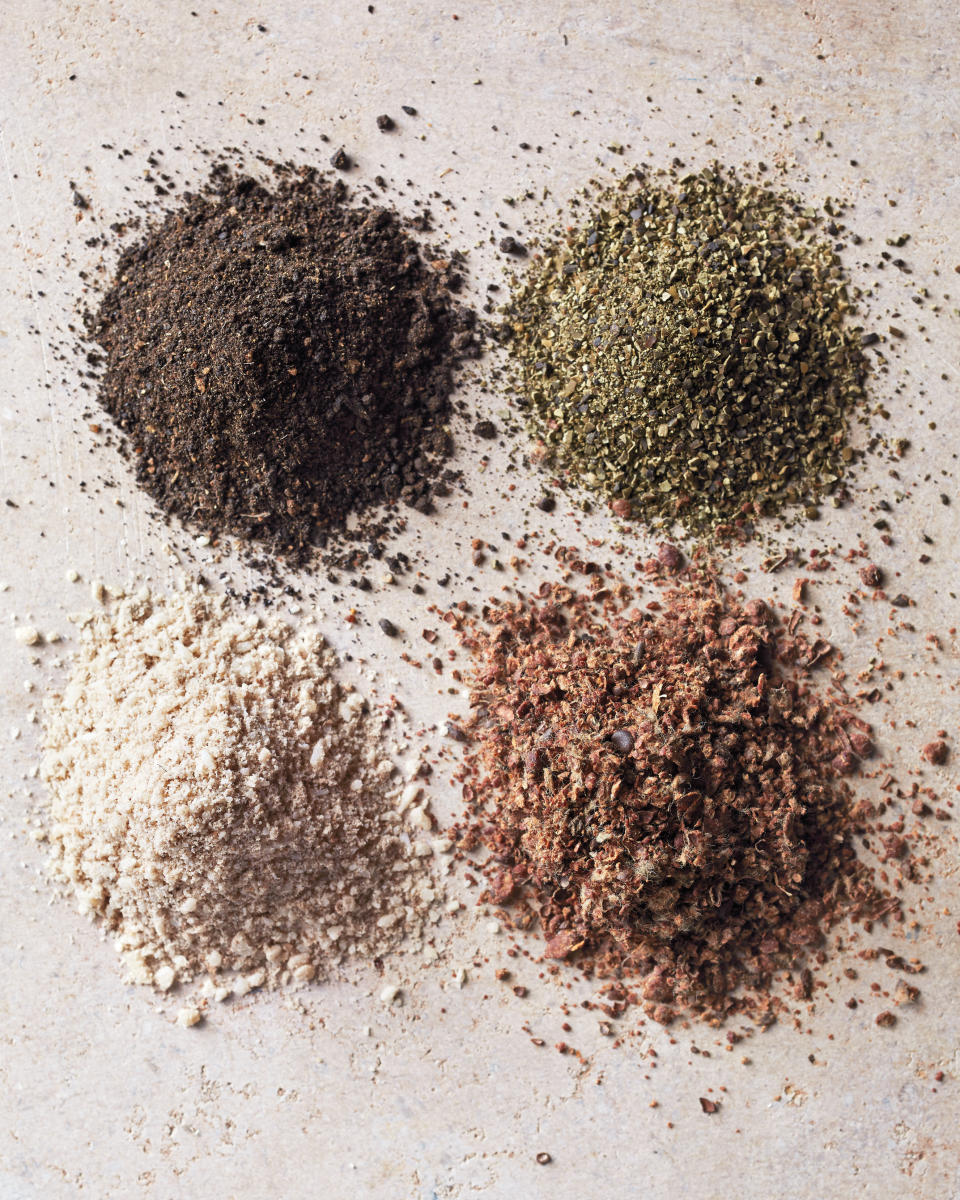
Other Soil Boosters
Pictured clockwise from left: Blood meal is high in nitrogen and is made from dried animal blood and works best for foliage plants. To the right is kelp meal, which consists of dried and ground seaweed, providing plants with nitrogen and potassium as well as trace elements that enhance growth. Below is bone meal, which is high in phosphorus and provides key nutrients for flower, fruit, and seed development. To the left is cottonseed meal—a by-product of the cotton industry which slowly releases nitrogen, phosphorus, and potassium into the soil while also increasing the acidity of the mix.
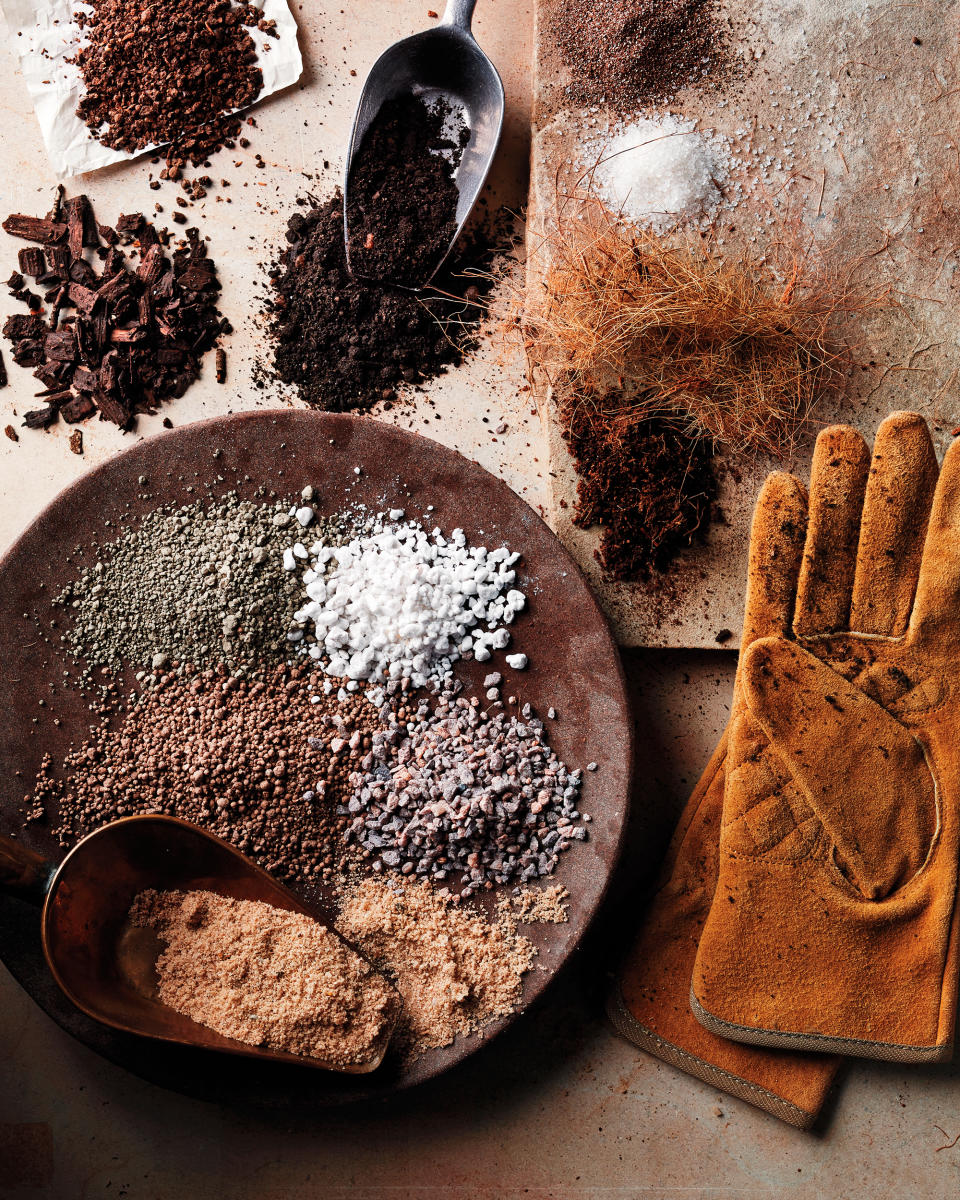
All-Purpose Soil Mix
This basic blend is ideal for most flowers, vegetables, and small shrubs as a starting base for customization. It includes one-part garden soil (store-bought or from a well-amended bed), one-part compost to add nutrients, one-part perlite for drainage, and one-part coir for water retention.
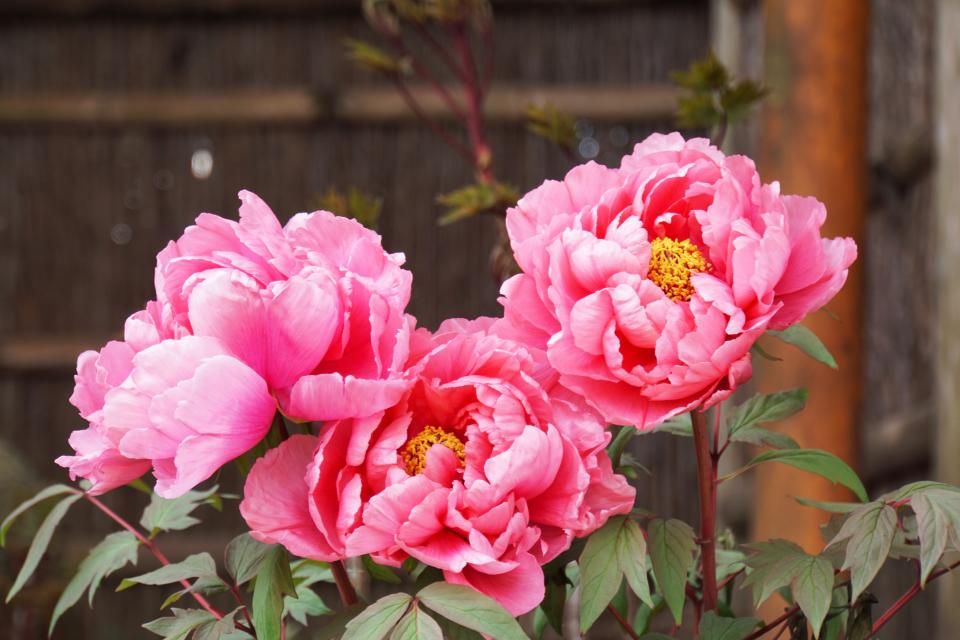
Soil Mix for Annuals
The extra fertility this recipe offers keeps flowers blooming all season long. It's ideal for annuals, which are heavy feeders. To make your own, use one-part coarse sand or poultry grit, one-part composted bark, one-part compost, and one-part organic fertilizer (or mix one-half-part bone meal and one-half-part kelp meal).

Geranium
Incredibly easy to grow, bursting with flowers, and giving more than it takes, hardy perennial geraniums only require well-drained, fertile soil (and to be appreciated). With over 300 species, there is a geranium for every occasion and they are well-suited to most garden situations. "They provide many gardens with colorful ground cover, borders, or edging," says Putnam. "Also, think out of bed and into the box with geraniums in containers or window boxes to add color to patios and balconies."
Zones: 3 to 9
Mature size: 4 to 48 inches tall x 6 to 36 inches wide
Soil requirements: Well-draining soil
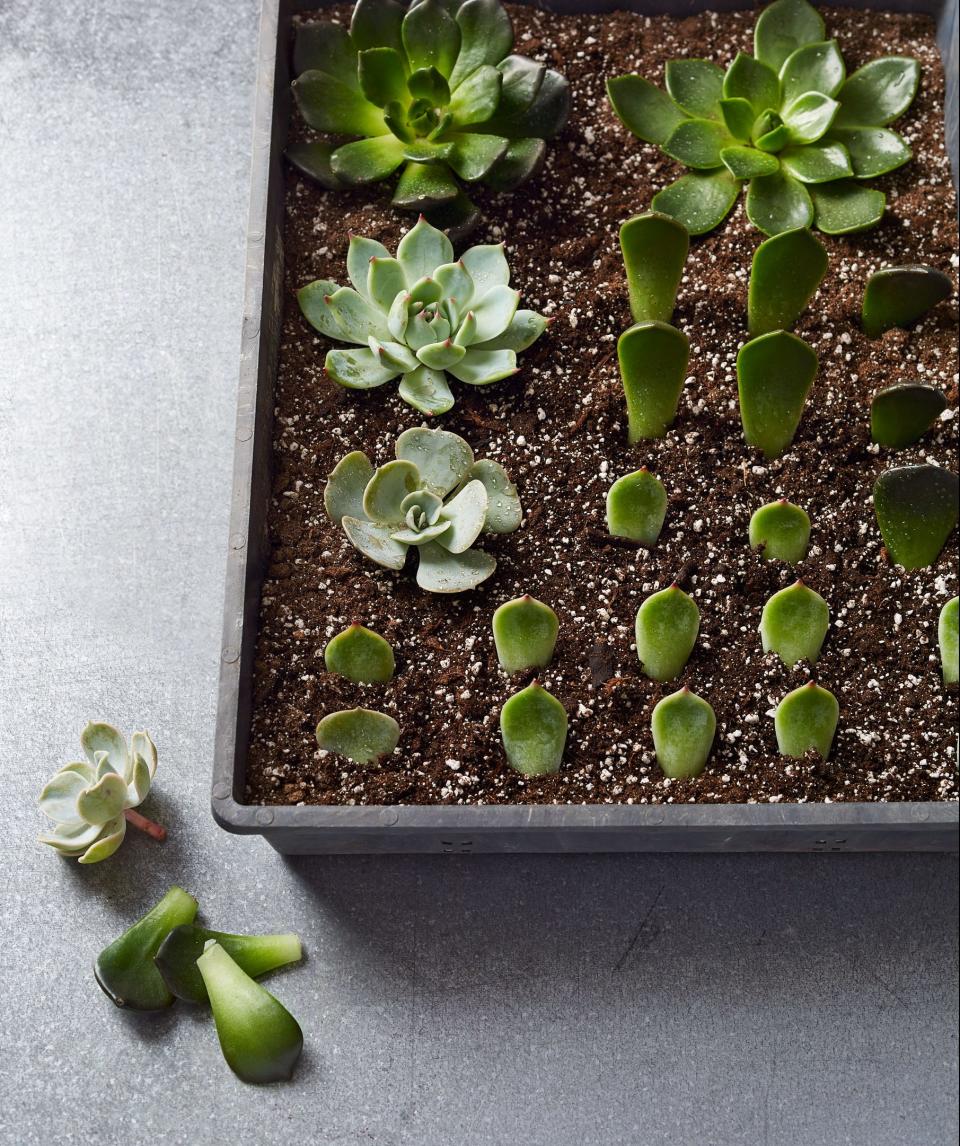
Soil for Succulents
The mantra is "drainage, drainage, drainage" when you're growing succulents. These desert and dry-climate natives never want to stay soggy, so a healthy amount of ingredients that help water flow through is a must. To make soil for succulents, use four-parts of all-purpose soil mix, five-parts perlite, and one-part coarse sand.

Soil Mix for Tropical Plants
Continually moist and always fertile soil is best for tropical plants, so bark and compost are the primary ingredients in this recipe. They hold moisture and release nutrients as they biodegrade, creating the perfect environment for jungle species.
First, mix together two-parts composted bark, one-part compost, and one-50-part charcoal. Then combine three-parts compost-bark-charcoal mixture, one-part perlite, one-part calcined clay, and one-part shredded coir.
Get the dirt on what's actually in your dirt.